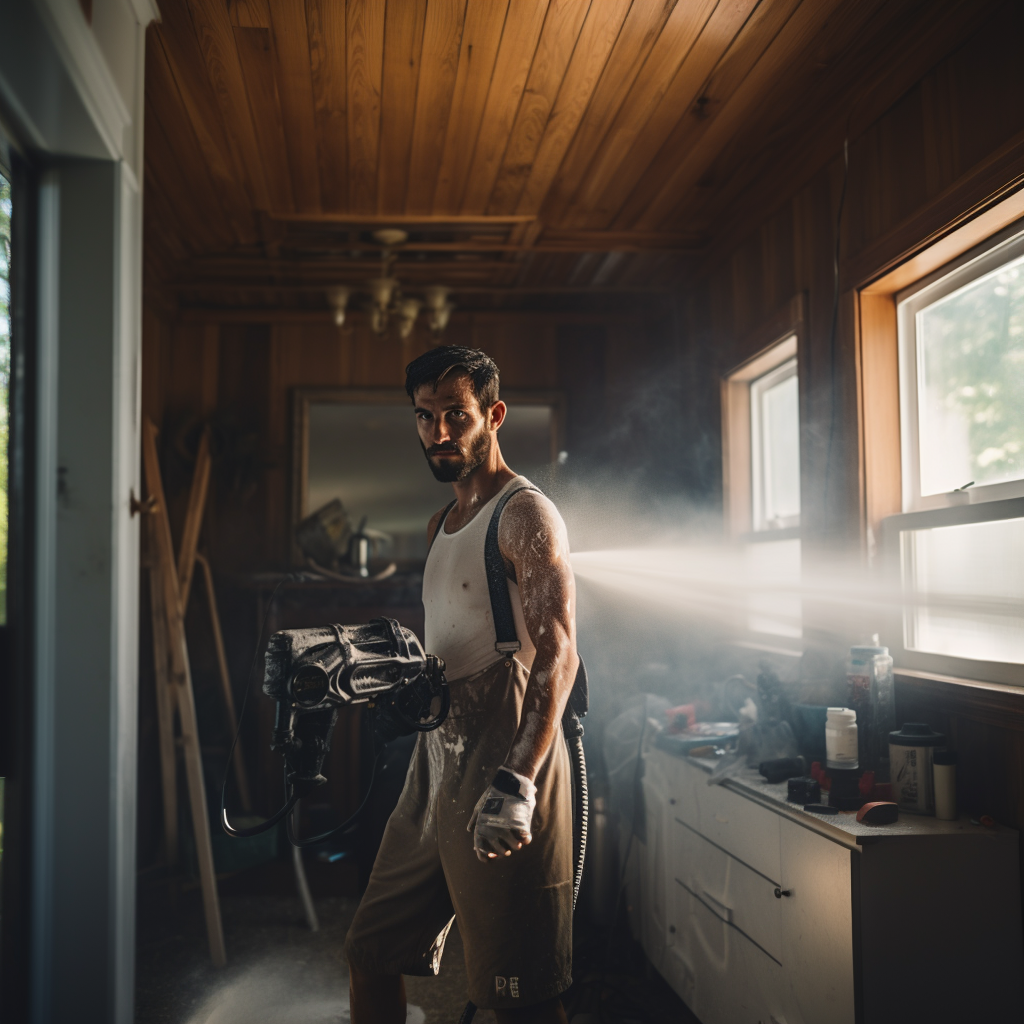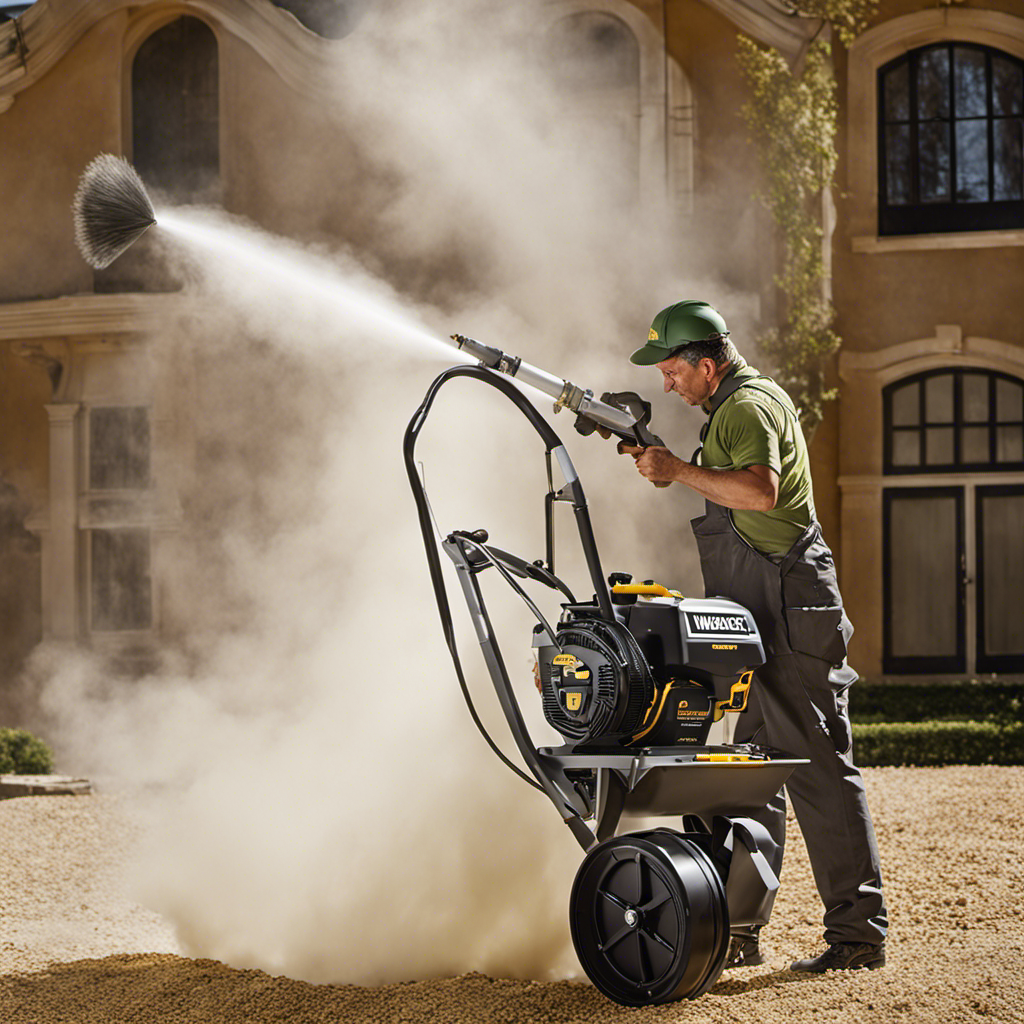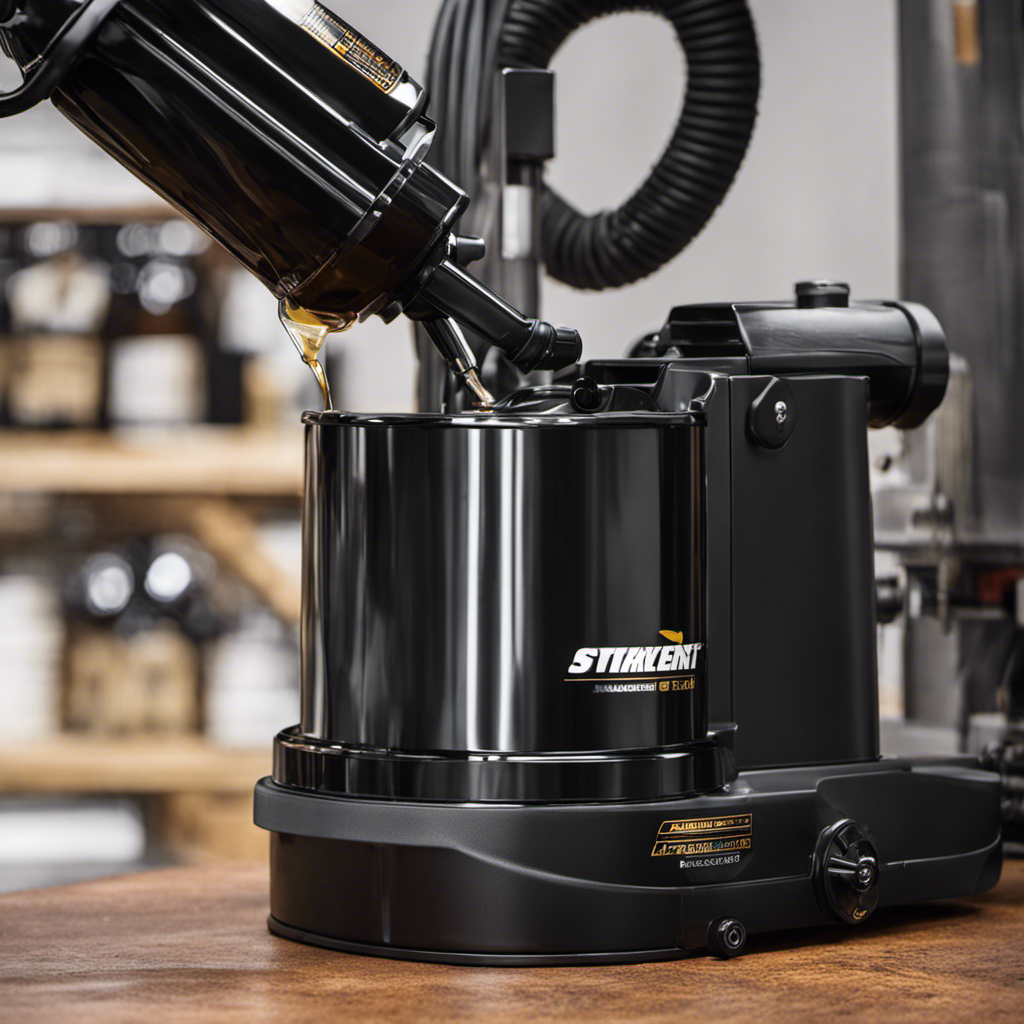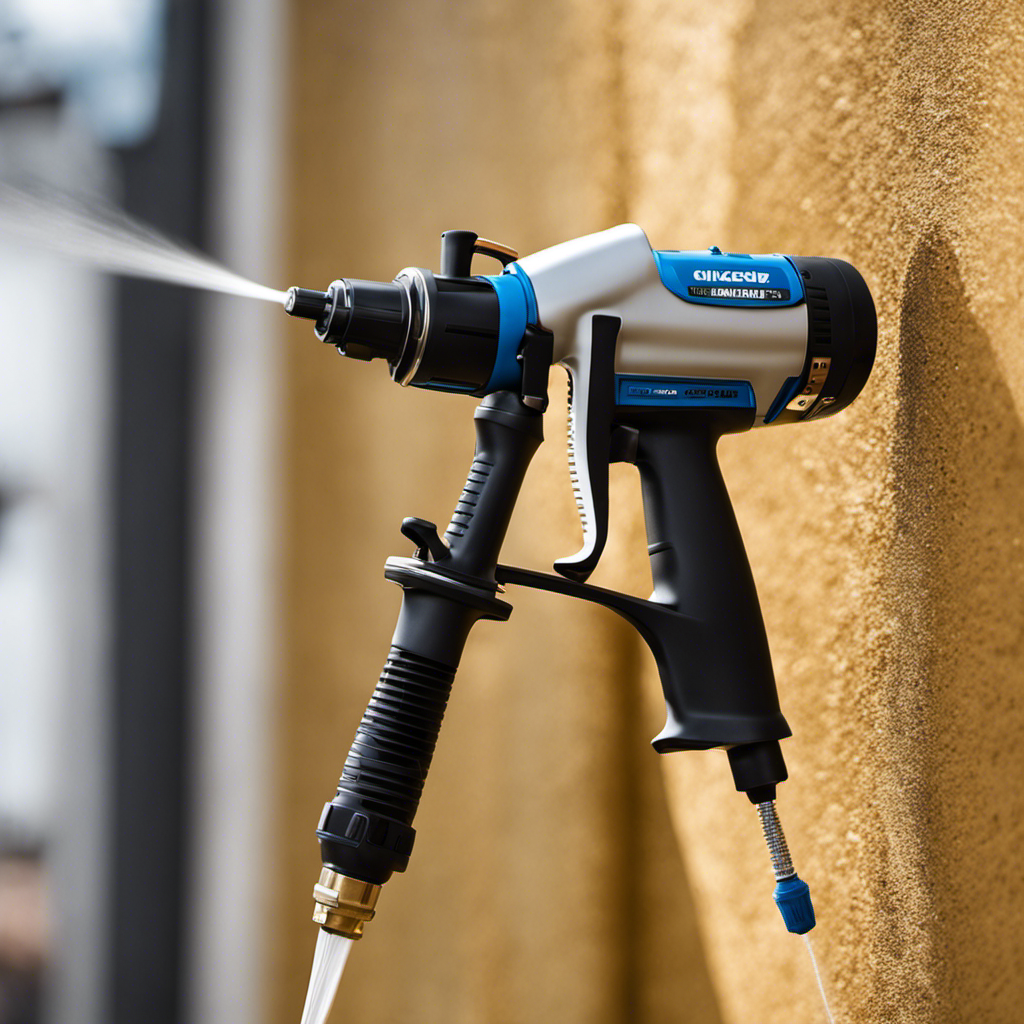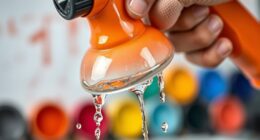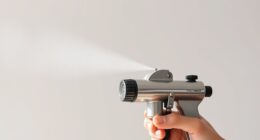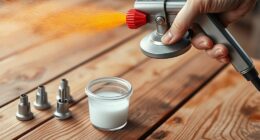If your spray gun gets stuck and keeps spraying, start by inspecting the trigger and surrounding parts for dirt, debris, or dried paint that could cause sticking. Clean the trigger mechanism gently with a mild solvent and a cloth, then check for any worn or broken parts like return springs. Adjust the settings if needed, and lubricate carefully with a compatible oil. If it still sticks, more detailed steps can help you regain full control.
Key Takeaways
- Inspect and clean the trigger and surrounding components to remove dirt, debris, or dried paint causing sticking.
- Check and adjust the trigger’s paint flow settings according to manufacturer instructions.
- Gently wiggle or press the trigger to see if it frees up; lubricate with a compatible, non-petroleum oil if needed.
- Disassemble the trigger assembly to inspect for worn or broken parts, especially return springs, and replace if necessary.
- If internal valve damage or blockage is suspected, clean or replace valves; seek professional repair if cleaning doesn’t resolve the issue.

If your spray gun keeps spraying paint nonstop, it can quickly become frustrating and wasteful. This issue often points to a problem with the trigger mechanism, which controls the paint flow. When the trigger gets stuck or malfunctions, it allows paint to flow continuously without your input. To regain control, you need to understand how the trigger mechanism works and how to troubleshoot it effectively.
First, recognize that the trigger mechanism is responsible for regulating the paint flow. When you pull the trigger, it opens a valve that allows paint to pass through the nozzle. Releasing it closes the valve, stopping the paint flow. If the trigger sticks or doesn’t return to its resting position, paint will keep spraying. This can happen due to dirt, debris, or wear and tear inside the trigger assembly.
Start by inspecting the trigger and surrounding components for any visible obstructions or buildup. Dust, dried paint, or debris can jam the mechanism, making it stick. Use a clean cloth and a mild solvent to carefully wipe away any residue. If the trigger remains stuck, try gently pressing or wiggling it to see if it releases. Sometimes, a slight adjustment or lubrication can free a jammed trigger. Be sure to use a lubricant compatible with your spray gun’s materials—avoid petroleum-based oils that might damage plastic parts.
Inspect and clean the trigger area with a mild solvent to prevent sticking and ensure smooth operation.
Next, check the paint flow adjustments. Many spray guns have settings to control the amount of paint coming out. If these are set too high or if the gun was left in a position that causes the trigger to stay partially pressed, it might contribute to continuous spraying. Adjust these settings according to the manufacturer’s instructions and test whether the trigger behaves normally afterward.
If the trigger still won’t reset, you might need to disassemble the trigger mechanism for a deeper inspection. Consult your spray gun’s manual for proper disassembly procedures. Look for worn or broken parts, especially springs that return the trigger to its resting position. Replacing faulty springs or components can restore proper function. After reassembling, test the trigger carefully to ensure it now moves freely and stops the paint flow when released.
In some cases, the issue could stem from internal blockages or damage to the valve that controls paint flow. If cleaning and adjustments don’t work, consider replacing the valve or seeking professional repair services. Remember, maintaining a clean and properly lubricated spray gun prolongs its life and prevents trigger sticking problems down the line. Regular maintenance and using proper cleaning techniques can help avoid similar issues in the future.
Frequently Asked Questions
Can Environmental Factors Cause a Spray Gun to Stick Open?
Environmental factors can definitely cause your spray gun to stick open. Humidity issues can lead to moisture buildup inside the gun, causing the trigger to stick. Temperature fluctuations can also affect the gun’s components, making parts expand or contract and leading to sticking. To prevent this, store your spray gun in a controlled environment, keep it dry, and avoid sudden temperature changes. Regular maintenance helps guarantee smooth operation.
Are There Specific Brands More Prone to Trigger Sticking?
You might think all spray guns are created equal, but surprisingly, some brands are more prone to trigger sticking. Ironically, those with flashy designs often have less reliable trigger mechanisms. Brand reliability and trigger design play big roles. Cheaper brands may cut corners, leading to sticky triggers, while reputable ones focus on smooth operation. So, don’t fall for the hype—choose a brand known for solid trigger design to avoid endless spraying frustration.
How Often Should I Perform Maintenance on My Spray Gun?
You should follow a regular maintenance schedule to keep your spray gun functioning properly. Typically, you need to clean it after each use to prevent buildup and guarantee smooth operation. For more extensive maintenance, perform a thorough cleaning and inspection weekly or after every few uses, especially if you’re spraying different materials. Adhering to consistent cleaning frequency helps prevent issues like trigger sticking and prolongs your spray gun’s lifespan.
Is It Safe to Use a Spray Gun With a Stuck Trigger?
Ever wondered if it’s safe to use a spray gun with a stuck trigger? The answer is no, it’s not safe. You should always follow safety precautions and avoid using equipment with trigger safety issues. A stuck trigger can lead to accidental spraying, injuries, or damage. Before continuing work, fix the trigger, disconnect the gun, and verify it’s functioning properly. Always prioritize safety to prevent accidents.
Can a Malfunctioning Air Supply Cause Continuous Spraying?
Yes, air supply malfunctions can cause continuous spraying because they lead to trigger issues. When the air supply isn’t working properly, it might keep the trigger open or prevent it from resetting, resulting in unintentional spraying. You should check the air compressor, hoses, and connections for leaks or blockages. Fixing these issues can restore proper trigger operation and guarantee you have control over the spray gun.
Conclusion
If your spray gun’s trigger gets stuck and keeps spraying, don’t panic. Regular maintenance can prevent 85% of these issues, saving you time and frustration. Just check for clogs, clean the nozzle, and make sure the trigger mechanism moves freely. Remember, keeping your equipment in good shape not only stops leaks but also extends its lifespan. With these simple steps, you’ll regain control quickly and get back to your project with confidence.
Franz came aboard the Paint Sprayer Zone team with a background in both journalism and home renovation. His articulate writing style, combined with a passion for DIY projects, makes him an invaluable asset. Franz has a knack for breaking down technical jargon into easy-to-understand content, ensuring that even the most novice of readers can grasp the complexities of paint sprayers.

